AROUND THE TABLE
FALL 2023
COOPERATIVE DEMOCRACY, FALL RECIPES, GREY FOX
FARM, FOOD INNOVATION PROJECT AND MORE

THE FOOD CO-OP QUARTERLY NEWSLETTER
FREE
General Manager
Kenna Eaton
Managing Editor
Andrea Stafford
Layout
Christopher Bunch
Copy Editor
Lisa Barclay

Contributors
Andrea Stafford, Kenna Eaton, Liam Cannon, Owen Rowe, Cameron Jones, Sidonie Maroon, Kate Nichols, Michael Flowers, Martha Trolin
Board of Directors
Juri Jennings, Claire Thomas, Michael Flowers, Dave Dunn, Lisa Barclay, Owen Rowe
Around The Table is published by The Food Co-op on a quarterly basis and comes out in the winter, spring, summer, and fall. If you are interested in contributing content for Around The Table, please contact marketing@foodcoop.coop to discuss your article idea. Articles should include stories about food, community, sustainability, or cooperation.
RE-BUILDING COMMUNITY & DEMOCRACY ONE CONVERSATION AT A TIME
BY KENNA S. EATON, GENERAL MANAGER

Over 50 years ago I emigrated with my parents to America. At first, we were just supposed to be here for just two to three years, but my family decided they liked living here, and we became what is known as “permanent residents.” Eventually, as an adult I made the decision to become a citizen—it was a fairly long, arduous process, culminating in a test that tested my own 8th grade civil studies classroom knowledge about how our democracy works. But by this point in time, I had come to appreciate the importance of living in a democracy, in which each of us is critical to the success of the whole. And where my voice— and my vote—truly counts.
One of the things that drew me to cooperatives is that, at its heart, a cooperative is a democracy. In fact, Cooperative Principle #2: Democratic Member Control states that cooperatives are founded on the ideals of democracy, and for a democracy to work, it requires us to work as well. In a very real sense, all co-operatives, not just ours, are the stewards of democracy. And we can also broaden that sense to influence our greater community as well.
Mary Parker Follett, a social worker turned philosopher, noted in 1918 that “Democracy is not a goal, but a path: not attainment, but a process through which people are actively engaged. To have democracy we must live it day by day.” Democracy works, but only if we participate in the process by paying attention, questioning, researching, and eventually voting. Voting is key. If we don’t vote, democracy becomes weakened.

2
Earlier in 2023 the Board asked our members to reflect on what we value most about this Co-op. We appreciated all the feedback and comments about how much our members love this Co-op, but some of you were saddened by what felt to you like a loss of community, and that got us thinking more broadly about what our role is in our community. This then led us to Jon Steinman, who has developed a technique he calls “Cooperative Dialogue.” Cooperative Dialogue embraces appreciative inquiry, helps us be more inclusive, and slows down the conversation, which in turn can help us be more democratic with a small “d,” and ultimately, rebuild and strengthen our sense of community.

A few years ago, Jon wrote a book about food co-ops, titled Grocery Story: The Promise of Food Co-ops in the age of Grocery Giants, which is a totally fascinating look into who owns your grocery store and what that means to us as consumers. Jon also helped found a housing co-op, and that experience led him to identify the importance of dialogue, not just discussion, in building a community. As he says, “Discussion involves individuals trying to win—to make one’s idea prevail. In dialogue, no one is trying to win. There is no pressure to agree or disagree.” Jon’s premise is that through Cooperative Dialogue, we can strengthen our skills, building resilience in our Co-op and our broader community by practicing the democratic principles that underlie both our cooperative and our country.
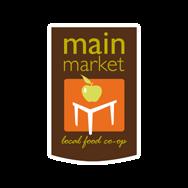
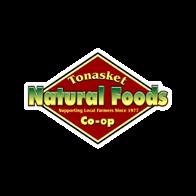

We are hosting two back-to-back Cooperative Dialogue workshops on January 23 and 24, 2024, one in Port Townsend and one in Chimacum, and both are free and open to anyone who wants to come and join us. I hope you are inspired to become an ally, a cooperator, a community asset, and to help reinforce the web of democracy. Please consider this your invitation to help be a re-builder of democracy and community.


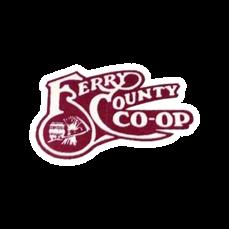










Washington Loves CO-OPS! 3
Living Democracy
BY OWEN ROWE, BOARD MEMBER
The previous issue of Around the Table featured our board candidate profiles. Well, now our candidates are board members! Thank you to Sasha, Cameron, and Claire for running for the board, and congratulations on your election. I want to personally thank all 783 member-owners who voted. (A couple of you did try to vote twice—don’t worry, we spotted it!) That’s 11% of our active membership, one of the highest turnouts in years for a board election. In honor of your democratic action in support of our community, we’re donating $783 to the Jefferson County Food Banks. We now have a full complement of seven voting board members (plus one non-voting emerita member), for the first time in quite a while. Seven is 0.1% of 7,000 … does that mean that 0.1% of the Co-op’s active memberowners are in control of the other 99.9%? Not at all!

Each of our board members is responsible for understanding and representing all of the Co-op’s member-owners. That applies every day of our terms on the board; democracy isn’t something that happens just once a year around here. “Democratic member control” is one of the seven principles of cooperatives, as defined by the International Cooperative Alliance (ICA.coop).
At The Food Co-op, not only are all members in good standing able vote for the board—you can run for the board too. We’re recruiting year-round. It starts with attending a board meeting, so you can see what work we do. Next, you’ll meet with current board members so we can see how we might work together. Once you demonstrate that you understand the roles and responsibilities of a board member, we’ll ask for your commitment. Board candidates commit to a fair and friendly election process, and to the board’s year-round job of stewarding the business.
On the board, we vote democratically to make decisions. Most decisions end up being unanimous— not because there’s someone behind the scenes pulling strings, but because we make sure to talk through and understand each decision and its implications in advance. If a decision isn’t ready to move forward, rather than throwing it out entirely, we’ll set it aside for more discussion. We’ll bring it back for another look once all the issues have been worked out.
As the saying goes, democracy isn’t something you have, it’s something you do. With the support of you—our member-owners—the board of The Food Co-op does democracy every day.

4
The Food Co-op Board of Directors








5
JURI JENNINGS PRESIDENT
LISA BARCLAY SECRETARY
MICHAEL FLOWERS VICE PRESIDENT
OWEN ROWE TREASURER
DAVE DUNN
CAMERON JONES
Thank you for your service!
CLAIRE THOMAS SASHA KAPLAN
Getting Toward The Ends
BY MICHAEL FLOWERS, BOARD VICE PRESIDENT

If you keep up with our Co-op’s governance news, you’re probably aware that the Co-op Board of Directors has been in the process of reviewing and revising what we call our Ends policy. Below you’ll find a brief chronology of our work, followed by a taste of the new document.
We’d been laying the groundwork for a couple of years. Then, in late January of this year, over the course of a weekend, the board and Kenna Eaton, our general manager, met with a consultant to actually begin the review process. During part of that weekend, we were joined by the Co-op’s department ]managers as we discussed pros and cons of our current Ends formulation.
In February, board members set up a booth outside the front entrance to the store, where we elicited input from customers. Our current Ends were listed on a large sheet of paper, and customers were asked to rank them in order of importance and encouraged to discuss them with the board members present. Around the same time, we sent out a survey with similar questions, asking for memberowner input.
Having gathered this data, we met again with our consultant, after which an ad hoc committee began the task of writing drafts. We came up with three quite different drafts, which the committee narrowed down to two. We then presented those two to the whole board for discussion, debate, and critique. It was a robust conversation, and the drafts were returned to the committee for further clarification and refinement.
In early June, two of the board members met again with store managers to get their input on the most recent draft. We received some very helpful suggestions and comments from the folks who are charged with implementing the vision of the Ends on a day-to-day basis. Following this, the committee made a few other changes to the draft, and in August the whole board will review it once again.
We think we’re pretty close to a policy statement that reflects the interests and concerns of our member-owners and staff, and that offers a large, aspirational vision for our Co-op in the years to come. We will, of course, be posting it when it is finally approved by the board.

But before we do that, here’s an example of what we’ve been up to. We received so many helpful comments and questions from our member-owners and staff, but there was a pretty basic one that we hadn’t actually considered. It was formulated in several different ways, but the gist was this: What do we mean by Ends? And why such a clunky term?
It’s actually a specialized term used in policy governance, a discussion of which is beyond the scope of this report. Suffice it to say that we took these questions and comments to heart. If we truly aspire to practice a form of democratic governance, we need to be clear on what we are asking people to weigh in on. So our first order of business was to clarify this term in as succinct a way as we possibly could. And here is the result:
Our Ends policy is a governing document, formulated by the Food Co-op’s board of directors, that broadly describes the organization’s reasons for existing. The general manager is responsible for interpreting and implementing our Ends, and for regularly reporting to the board on compliance. Our Ends policy is periodically reviewed, updated, and revised by the board, with input from member-owners, staff, and the general manager.
From a purely business point of view, the lengthy process described here would probably be considered a rather inefficient way of creating an organization’s guiding document. But our intention has been to listen and respond to the concerns of our constituents as we try to enact a process that is as close to representative democracy as we’re able to accomplish. We thank all of you who have participated in this process, and hope that you will find the final product satisfying.
6
What is Community?
 BY CAMERON JONES, BOARD MEMBER
BY CAMERON JONES, BOARD MEMBER
I hope this message finds you immersed in the joys of early fall. I’m excited to share my recent experience at the Consumer Cooperative Management Association (CCMA) conference in Sacramento, a journey that has enriched my understanding of our cooperative’s potential and our role within the broader cooperative movement. The CCMA conference was an assembly of cooperative enthusiasts, leaders, and experts, each contributing unique perspectives to the tapestry of cooperative growth. Reflecting on the conference, I’m reminded of the pivotal role that outreach and a thriving workplace play in shaping an equitable future for both our cooperative and our community.
Empowering Outreach and Inclusive Engagement
The insights I gained from the conference workshops resonated deeply with our commitment to “Market Relevance.” One standout session, “The Common Thread: Introduction to Cooperative Diversity, Equity, and Inclusion Scorecard,” led by LaDonna SandersRedmond, shed light on practical strategies for fostering diversity, equity, and inclusion. This approach aligns seamlessly with our aspiration to provide access to healthy food for everyone in our community. By sharing our cooperative’s stories and forging partnerships, we create connections that extend beyond our walls, fostering an inclusive environment where each individual feels valued and welcomed.
I am personally excited to explore with the board and general manager how these strategies might be further implemented at our cooperative. However, I want to emphasize that my commitment reflects my individual perspective as a board member and not the official stance of the entire board or the General Manager.
Nurturing a Thriving, Inclusive Workplace
One of the conference’s workshops, “Creating a Culture of Inclusion,” underscored the importance of a thriving workplace. It delved into inclusivity within the context of transitioning away from white supremacy culture toward an anti-racist culture. This strategy advocating for explicit commitment to being anti-racist deeply resonated with me. While Inclusion holds a significant place among the Co-op’s seven values, signifying our collective commitment, there are a diversity of perspectives on how to achieve this goal. I’m dedicated to championing this specific strategy in my capacity as a board member. I aspire to contribute fresh insights to the board’s deliberations on how we can collectively advance this crucial objective.
Furthermore, a powerful discourse in the “Advocacy and Identity” workshop led by Cornelius Blanding left a lasting impression. It highlighted the core purpose of cooperatives—to empower members and make a meaningful community impact. This perspective reaffirmed my dedication to the cooperative movement and its potential for fostering positive change here in our community.
In closing, the CCMA conference has solidified my belief in the transformative power of outreach, engagement, and a inclusivity. Particularly for communities like ours, remaining connected to the broader national cooperative movement ensures that we cultivate an inclusive environment and avoid unintentionally isolating ourselves in a perceived “elitist” bubble.
Thank you for joining me on this journey toward a future marked by equity, empowerment, and community spirit.
Working Together to Nourish Our Community!
7
Meet Laurae Hughes of Gray Fox Farm
BY KATE NICHOLS, CO-OP MEMBER
In 2006, Laurae Hughes bought ten acres in Chimacum Valley that was so overgrown with reed canary grass she found a tractor and a creek hidden in the grass. She has turned this land into Gray Fox Farm. Her farm is Certified Naturally Grown, a certification farmers use to rate their peers on their ecological farming methods. She explained it is an affordable way for farmers to hold each other accountable to the “highest ideals of the organic movement.” She is also a member of the Northwest Native Chapter, an organization for Native entrepreneurs who are grounded in their cultures.

“Farming on my own, being able to rely on myself, creates a sense of pride,” Laurae explains. She raises chickens and sells the eggs wholesale, and she also raises ducks as a part of her pest management system. In addition, she uses companion planting. Her honey bees collect nectar from the clover she plants for ground cover.
Laurae has over 2000 blueberry bushes. She started using netting around her blueberries, but after she found 35 dead birds in the netting, she decided to let the reed canary grass surround the berry bushes. Now the birds are safe and they don’t spot too many berries to eat among the tall grass.
8
She picks blackberries, juniper berries, and fruit from her plum, apple, and pears trees, some of which were growing on the land when she bought it. She grows strawberries, radishes, and other fruits and vegetables as well. She plans to extend her growing season, and she recently purchased a 30’ x 100’ double-walled, insulated greenhouse for growing winter crops for the local Food Banks.

When she realized there were already enough local farmers growing produce, Laurae turned to creating value-added products—jams, jellies, soups, and sauces. Her jams include Blackberry Thai Chili, Ginger Peach, RhuBerry, Honey Apple butter, and Spiced Apple Pear.





Laurae enjoys teaching people how to grow and process their own food. She wants Gray Fox Farm to become a hub for learning skills like bee keeping, soil health, companion planting, hide tanning, introductory basket making, and food preservation. She believes these self-sustaining practices bring us joy and purpose as human beings.
Check out her wholesome products in the jam section of the Food Co-op and her Facebook page for classes.

9
Port Townsend’s 9th Graders Product Innovation Market
BY MARTHA TROLIN, SKILLMATION
What happens when you ask every 9th Grader to create a team of classmates with whom to develop an innovative product, having at least one local ingredient, and then prototype it, design a logo, create packaging, and table display, and then scale it to sell at a fair for 100 plus attendees? THEY DO IT! And they come up with amazing ideas while getting their first taste of true entrepreneurship.
It does, however, take a village: Two fabulous innovative teachers Ms. Kruse and Ms. Grace at the helm; at least 20 local Skillmation Mentors; The Food Co-op supplying ingredients, many also locally sourced; The Chimacum Grainery for locally grown wheat; the school cafeteria for packaging; herbs and veggies either homegrown or from community gardens, and, likely hundreds of parent hours of listening, suggesting and soothing.
Market Day happens in the spring during the month of May. There are 40+ student businesses, some solo, most are group endeavors. This year’s awards went to 4 categories: Best Food Product, to Willow Creek Butter (garlic & berry!). Best Non-Food Product to Stonewood Incense. Shoppers Choice was Luna’s Salsa (pictured below). Best Branding was EMK Seeds (sunflower, roasted to eat and plain for planting). Best Team Effort went to Bulgogi selling a Korean street-food lunch at the entrance to the gymnasium. All proceeds from Market Day go to the 9th Grade Class Fund, for trips and prom. The Product Innovation Market is not the only part of mentoring a school year of 9th Grade Mentoring. For Skillmation Mentors, however, it is a particularly amazing longitudinal look into 9th graders grappling with invention, production, group dynamics,

marketing, scaling, long-term planning and follow through! 9th Grade Mentors meet with students one to 2 times a month throughout the school year.
If you would like to be: a 9th Grade Mentor; or, help 11th & 12th graders with their post high school plans, essays and applications; or, play chess with middle & high schoolers; or, subject coach in just about every subject area; contact Skillmation at info@ skillmation.org. We’d love to get you connected!
Luna’s Salsa
To Learn more about Skillmation visit www.skillmation.org 10
Apple Jerky
Artisan Butter

Baby Burger Bar

Flan Clan
Great British Dragon
Nadpozemsky Pekarn
Hot Girl Pickles
Sacred Cookies




Tara’s Baked Goods

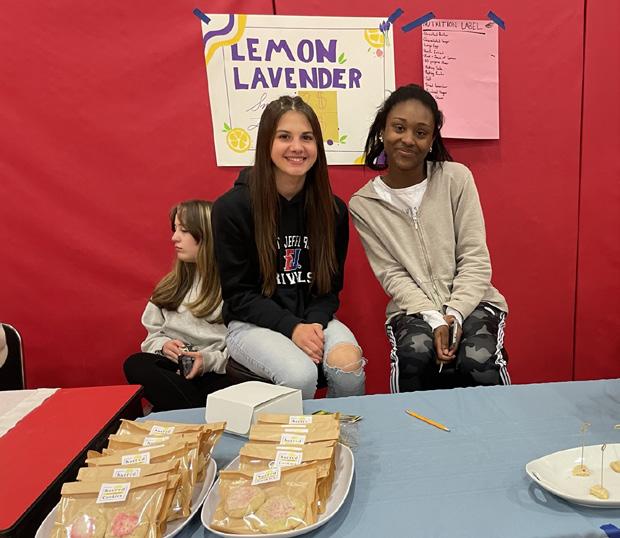
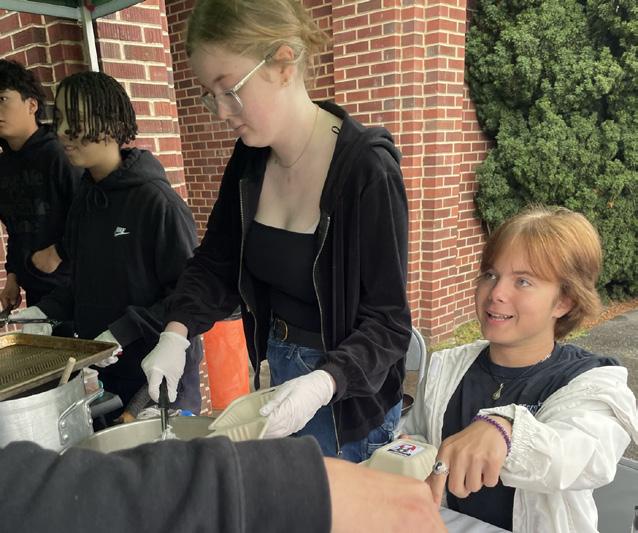

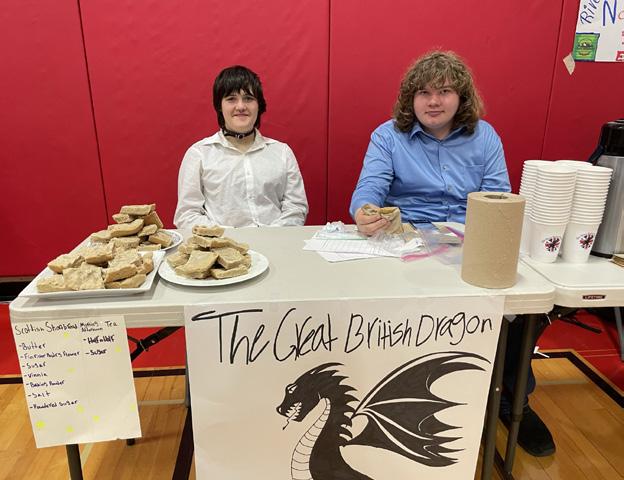

Breakfast @ Mclees

Jambiscus

Tea Thyme

Korean BBQ
Lemon Lavender
Tres Amigos Tacos
Fuggles, Slang and other Silliness
BY LIAM CANNON, FOOD CO-OP STAFF & MEMBER
Food has made the biggest impact on humanity. We eat it, talk about it, make fun of it, and compare people and situations to it. Our language has definitely been impacted by it and full-blown wars have been started over it. I guess you could say it gives us food for thought.
Food Conflicts
Anthropologists and archaeologists speculate that the earliest conflicts of prehistoric man happened over food. Not just food but also what we flavor it with. Wars over the spice trade have been fought all over the world— we have seen several wars and the collapse of empires over salt alone.
The El Paso Salt War is a prominent example of this. The Mexican-American War ended in 1848 with the enactment of the Treaty of Guadalupe Hidalgo, which transferred ownership of what we know as the Southwest from Mexico to the United States, and Mexicans living on those lands—Tejanos—were given American citizenship. When the El Paso valley with its salt flats was under Mexican rule, the land was considered common ground. Anyone could enter the region and take whatever salt they needed for food flavoring and preservation. Under the new government, people were allowed to stake claims to this land and the salt on it. Texas’s newly formed constitution of 1866 extended these rights to corporations as well. As you might imagine, this shift in
ownership was a hotbed for personal gain and political maneuvering. Charles Howard, a district judge, filed a claim on the salt flats in the name of his father-in-law. In 1877, Howard used a legal injunction, enforced by the the sheriff, to thwart a community-rights group from taking salt from his land. In turn, they abducted Howard, kept him prisoner for three days, and forced him to sign a document relinquishing his claims to the salt. Later that week Howard shot and killed Louis Cardis, the leader of the group.
Local Tejano people then overturned the local government and spread fear among the Anglo-Americans, who represented only 1% of the 5000 residents. This small group requested help from the state government’s militia and the Texas Rangers. Howard led a detachment of 20 Rangers to Elizario. Howard and the troops were quickly overpowered and surrendered to the Tejanos. This was the only time in history that Rangers surrendered to anyone. Howard and two of the Rangers were promptly executed. After this, the Tejanos looted the town and killed many residents. The US Army sent the 9th Cavalry to resolve the situation, forcing the remaining Tejanos into Mexico with the Mexican army keeping watch on the south side of the Rio Grande. Tensions were high and there was the possibility of reigniting the Mexican-American War. Fortunately, it never became more than a political staring match along the Rio Grande

12
Food Slang
used words for communication, but is wasn’t until 1699 that a lexicographer using the nom
Let’s take a look at some of the ways that food
Slang has been around for as long as we have used words for communication, but is wasn’t until 1699 that a lexicographer using the nom de plume of “B. E. Gent” published the first in-depth dictionary of non-standard English. Let’s take a look at some of the ways that food has crept into our slang vocabulary.
What is a Fuggle? Can you even say it without being a gigglemug? The story goes that in 1861 Richard Fuggle discovered a new hop seedling in England. He held on to his secret find for fourteen years before he introduced it to the beer making world. Today it is an extremely popular hop worldwide for its distinct aroma, pleasant taste, and its tolerance to mildew in the field. Of course, this awesome word had to be made into slang. When your partner allures you into believing that they just want to cuddle but actually have plans go further, it is known as fuggling.

Richard Fuggle discovered a new hop seedling in England. He held on to his secret find for pleasant taste, and its tolerance to mildew in
“In the ketchup” is a phrase meaning “in the red” or “operating at a deficit.” In the Edwardian era, accountants wanting deficits to get immediate attention on their hand-written documents would use red ink. Those of us who learned typing on mechanical typewriters may remember that the ribbons were half red and half black. Although typewriters were introduced in 1874, early accountants still used bound books for their records and didn’t consider using typewriters until 1921, when bicolor ribbons were patented.
Edwardian era, accountants wanting deficits to and half black. Although typewriters were color ribbons were patented.
western Tombstone. His best line in the movie happens when he confronts Johnny Ringo
Brave knights demonstrating their prowess in
One of Val Kilmer’s best performances was his portrayal of Doc Holiday in the 1993 western Tombstone. His best line in the movie happens when he confronts Johnny Ringo and says, “I’m your huckleberry.” There are two known sources for this almost forgotten reference. The first is from King Arthur lore. Brave knights demonstrating their prowess in competition or on the battlefield were honored with huckleberry branches attached to their lances, indicating they were champions or had committed some heroic deed. Doc Holiday grew up in 19th century Georgia, where this slang phrase referred to the best person for a job.
day job.” In the 1800s you would say that someone with a round plump face was bacon-
and wanted bacon and eggs, you would order “two dots and a dash,” referencing morse code. If you contracted the swine flu
a southern reference in the 1960s for tasty strips of bacon.
Bacon is a very popular food, and not surprisingly, it keeps popping up in our slang. For me, bringing home the bacon is something I do for Sunday breakfast, but others use the phrase to mean legitimate earning of money to bring home to the family. Telling someone they have “a good voice to beg bacon” is the 17th-century version of “don’t quit your day job.” In the 1800s you would say that someone with a round plump face was baconfaced. If you stepped into a diner during WWI and wanted bacon and eggs, you would order “two dots and a dash,” referencing morse code. If you contracted the swine flu during the 1919 pandemic, you would tell you friends “I’ve got the bacon” to warn them to keep a safe distance. Arkansas T-bone was a southern reference in the 1960s for tasty strips of bacon.
13
Sometimes slang springs up from ignorance. When you miss a meal or barely eat, you are said to be on a Chameleon Diet, because chameleons, those color-changing lizards, move so slowly they were once believed to get all their nutrients from the air. If I could do that my grocery bill would be greatly reduced. I would still have to eat chocolate though.
Other Silliness
Apples are not native to north America. Settlers from England brought trees with them. They produced hard apple cider and then used a freezedistillation process to increase the alcohol content to roughly 30% alcohol. The result was known as applejack. The 1960s’ cereal Apple Jacks was a nod to this piece of history.
Sometimes if we use an incorrect word for something long enough, it will permanently stick.
Boston Cream Pie is one of those examples. Who doesn’t love the delicious Boston cream pie? Everybody knows, or should know, that Boston cream pie is actually a cake. So why do we call it Boston cream pie? The first part is obvious—it was invented in Boston, Massachusetts, in 1856. Mossberg Sanzian, a French chef who worked at the Parker House Hotel, created this tasty desert. At the time, he only had one kind of round pan for both cakes and pies. He intended it to be a cake, but when it came out of the oven, people confused it with a pie. Even after they knew the truth, they still called it a pie and no one bothered to change the name. It became the official dessert of Boston on December 12, 1996.
Hope you enjoyed this bit of silliness and have a tickety-boo day.
Happy Cabbage: Sizable amount of money to be spent on personal pleasures.
Take the Egg: To win.
Pretzel-Bender: Peculiar person.
Red Onion: A dive bar.
Chicks on a Raft: Eggs on toast
Bloodhound in the Hay: Hot dogs with sauerkraut.
To Know Your Onions: To know what’s up or what’s going on (circa 1920s).
Cucumber: A tailor (1800s)
Give One Your Oatmeal: To punish.
Lobster: A gullible, awkward, bungling, or undesirable fellow.
Cut the Mustard: To succeed
In a Pickle: A quandry or difficult situation
Try using some of these fun sayings in your daily conversations and you might make someone smile like a Cheshire cat.
14
2023 FOOD CO-OP HOLIDAY GUIDE!

15
Gifts to Give and Treats to Have on Hand
BY SIDONIE MAROON, CULINARY EDUCATOR FOR THE FOOD CO-OP

For this holiday issue of Around the Table, I’m sharing my version of the Italian salame di cioccolato. Yes, there is an Italian dessert shaped like a salami and called salame dolce or salame di cioccolato, which translate to “sweet salami” and “chocolate salami.” It is a no-bake dessert made with cocoa, biscuits, butter, and sometimes dried fruit, nuts or liqueur. It’s rolled to look like a salami, then dusted with powdered sugar and wound with baker’s twine to give it that authentic look. When you slice it, there’s the satisfaction of eating what looks like salami on the outside and inside, but you know it’s not and anticipate the chocolaty sweet confection. I’ve devised a healthier version with sophisticated flavors, while keeping to Italian sensibilities with the salami shape.
Looking at several classic recipes for salame di cioccolato, I realized another famous Italian sweet was in my head—Panforte di Siena. Nuts, candied peel, and spices are ground together with honey into a rich dense cake, maybe the 14th-century Italian version of a candy bar. I used ideas from the panforte for my salame dolce and combined them with other ingredients and flavors I’ve recently worked with.
Figs and Black Pepper
Black pepper and figs have complementary flavors and aromas. The figs have a sweet, honey-like flavor and earthy undertone, while the black pepper is spicy with a hint of sweetness. When combined, they create deliciousness.
Roasted Carob and Chicory
Bitter with a sweet caramel flavor, this duo is a substitute]for dark chocolate. So many people mistake the flavors for chocolate that it’s become my trusted alternative. I’m allergic to chocolate! I know. But carob isn’t just a hippy fake from the 70s. It has a long tradition in the Mediterranean and is a nutritious food with more calcium than a glass of milk. I often use roasted chicory in my baking. Try carob and chicory with a touch of cinnamon to make a delightful warm drink.
Pistachios and Dates
Pistachios and dates are a classic combination that’s both sweet and nutty. With a rich, buttery flavor, the pistachios pair with the sweet, caramel-like taste of the dates. Chewy textured dates complement the crunchy texture of the pistachios, adding a contrast. Plus pistachios are a superb source of protein, fiber, and healthy fats, while dates are high in fiber, vitamins, and minerals!
Aniseed, Vanilla, and Cinnamon
The flavor combination of aniseed, vanilla, and cinnamon is sweet and spicy. The licorice-like flavor of the aniseed works well with the creamy taste of the vanilla, while the cinnamon adds a subtle kick. Together, they are so satisfying.
I’ve included the traditional renditions of both salame di cioccolato and panforte di Siena. Bake them as written, or get creative and make your own healthier holiday versions.
16
Salame di fico, pepe nero
e carruba
Ingredients
1/2 cup pitted dates
10 dried figs (any kind) with ends cut off
1/2 cup unsalted, cold butter, chopped
1/4 cup ground flaxseeds
2 tablespoons roasted chicory root (chicory coffee works)
1/2 cup carob flour, plus more for dusting
1 teaspoon cinnamon
1/2 tsp black peppercorns (¼ teaspoon for a milder version)
1 teaspoon aniseed
1/4 teaspoon sea salt
3/4 cup roasted whole pistachios
2 teaspoons vanilla extract
1/4 cup water
Directions
1. In a food processor, grind the dates and figs together into a coarse meal.
2. Add the chopped butter and pulse until the meal comes together but you still see some chunks of butter.
3. In a spice grinder, grind the flaxseed, chicory, cinnamon, peppercorns, aniseed, and salt into a powder.
4. Scrape the dried fruit and butter mixture into a large mixing bowl. Stir in the pistachios, ground flaxseed mixture, and 1/2 cup carob flour until well combined. Add 1/4 cup water to bring it all together.
5. Divide the mixture into three balls, about 1 1/4 cups each. Shape each ball into a 6-inch “salami” with tapered ends. Dust each salami with carob flour and roll in parchment paper, twisting each end. Use baker’s twine to give it an authentic salami look.
6. Store in a freezer bag and store in fridge for easy slicing. To serve, slice them thin
Salame di Cioccolato


Ingredients
1 cup (2 sticks) unsalted butter, softened
1 cup granulated sugar
2 large eggs (pasteurize if you prefer)
1 cup unsweetened cocoa powder
2 cups plain cookies (such as digestive biscuits), crushed into small pieces
1 cup whole almonds, roughly chopped Icing sugar, for dusting
Directions
1. In a large mixing bowl, cream together the butter and sugar until fluffy.
2. Add the eggs one at a time, beating well after each addition.
3. Sift in the cocoa powder and fold it into the mixture until well combined.
4. Add the crushed cookies and chopped almonds into the bowl and mix until dispersed.
5. Turn the mixture out onto a large sheet of parchment paper and shape it into a log.
6. Roll the parchment paper around the log and twist the ends to seal it.
7. Chill the log in the refrigerator for at least 2 hours or until it is firm.
8. To serve, remove the log from the parchment paper and dust it with icing sugar. Slice into thin rounds and serve.
17
Panforte di Siena

Ingredients
1 cup whole almonds
1 cup whole hazelnuts
1/2 cup candied orange peel, chopped
1/2 cup candied lemon peel, chopped
5 tablespoons cocoa powder
1 teaspoon ground cinnamon
1/4 teaspoon ground cloves
1/4 teaspoon ground ginger
1/4 teaspoon ground nutmeg
1/4 teaspoon ground coriander
1 cup granulated sugar
1 cup honey
Confectioners’ sugar, for dusting
Directions
1. Preheat the oven to 350°F. Grease an 8-inch cake pan and line the bottom with parchment paper.
2. Spread the almonds and hazelnuts on a baking sheet and toast in the oven for 8 to 10 minutes or until golden brown. Remove from the oven and let cool.
3. In a large bowl, combine the toasted nuts, candied orange and lemon peels, flour, cocoa powder, cinnamon, cloves, ginger, nutmeg, and coriander.
4. In a small saucepan over medium heat, combine the sugar and honey. Cook, stirring, until the sugar has dissolved, and the mixture comes to a boil.
5. Pour the hot honey mixture over the nut mixture and stir until well combined.
6. Transfer the mixture to the prepared pan and smooth out the top with a spatula.
7. Bake for 25 to 30 minutes or until the edges are firm, but the center is still slightly soft.
8. Let cool in the pan before removing and dusting with confectioners’ sugar.
9. Cut into wedges and serve.
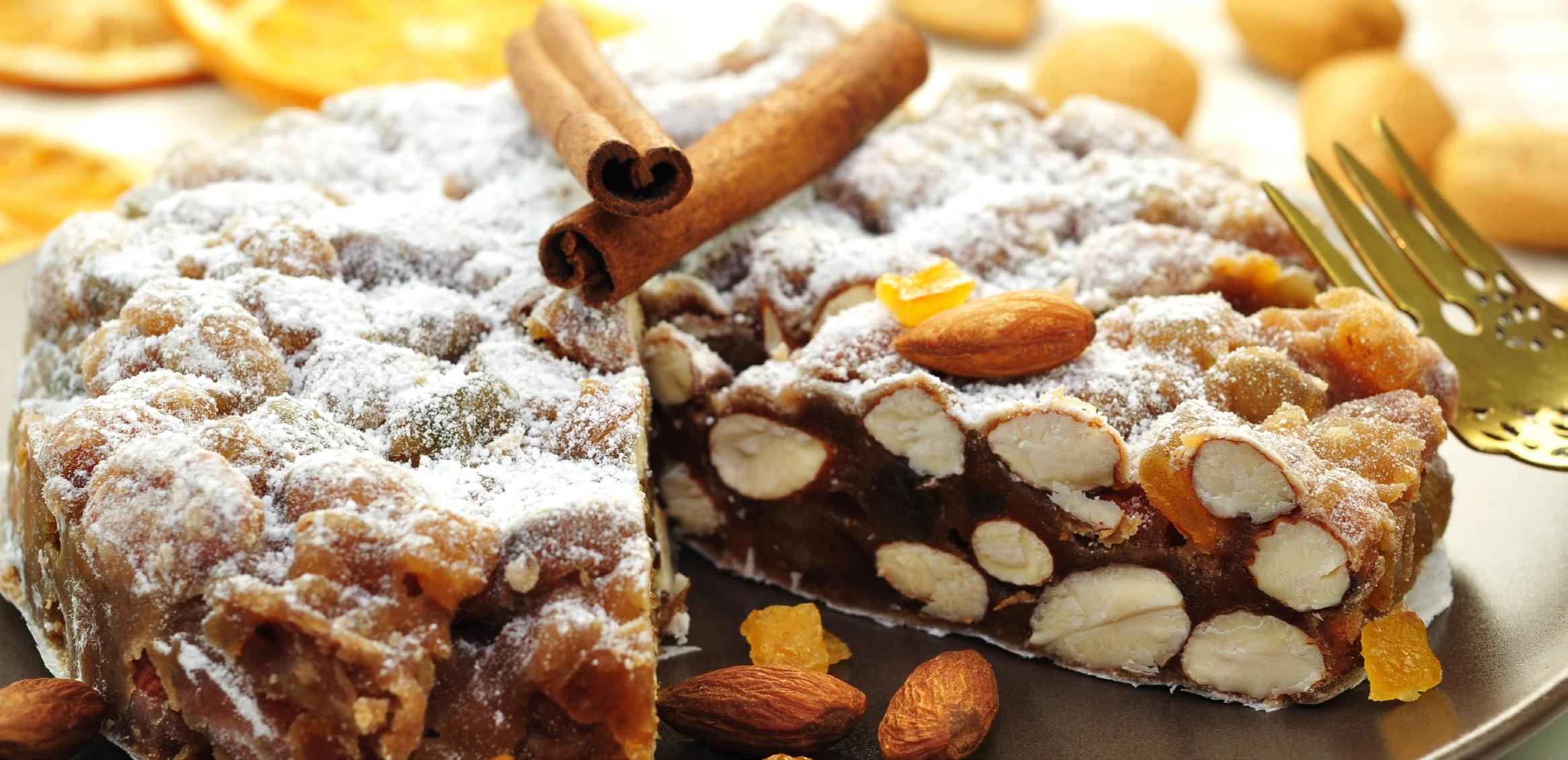
18






Need more recipes for the holiday season? Check out our previous editions of Community Cook! Community COOK WWW.FOODCOOP.COOP/COMMUNITY-COOK 19
HOLIDAY MEAL DEAL!
Want to host a holiday gathering but don’t enjoy the cooking or the mess? Don’t worry, we got you covered! Complete with all the traditional holiday fare, our co-op premade meals will not only impress your guests, they come without the prep time giving you more opportunity to hang with family and friends.


Serves 1
•Turkey (WHITE) or Turkey (White-dark) or Ham or Field Roast (Vegan Option)
•Gravy
•Mashed potatoes
•Coconut yams
•Cranberry relish
•Stuffing
•Rolls
•Green bean
•Pumpkin Pie
$79.99
$24.99
HOLIDAY MEAL DEAL
Serves 2-4 people
•Turkey (WHITE) - 2 lb or (White-dark)
1 lb eaor Ham 2 lb or Turkey/Ham Combo 1 lb each or Field Roast (Vegan Option)
•Gravy 16 oz
•Mashed potatoes - 2 lb
•Coconut yams - 16 oz
•Cranberry relish - 8 oz
•Stuffing - 4 muffin tins
•Rolls - 6 rolls
•Green bean - 1 lb
•Pumpkin Pie - 1 large
Reservation forms will be live on our website starting October 15th. Meals will be available for pickup during the following dates: November 19-25th, December 17-24th.
To order visit www.foodcoop.coop Got Questions? Call 360-385-2883 20
HOLIDAY DINNER PLATE




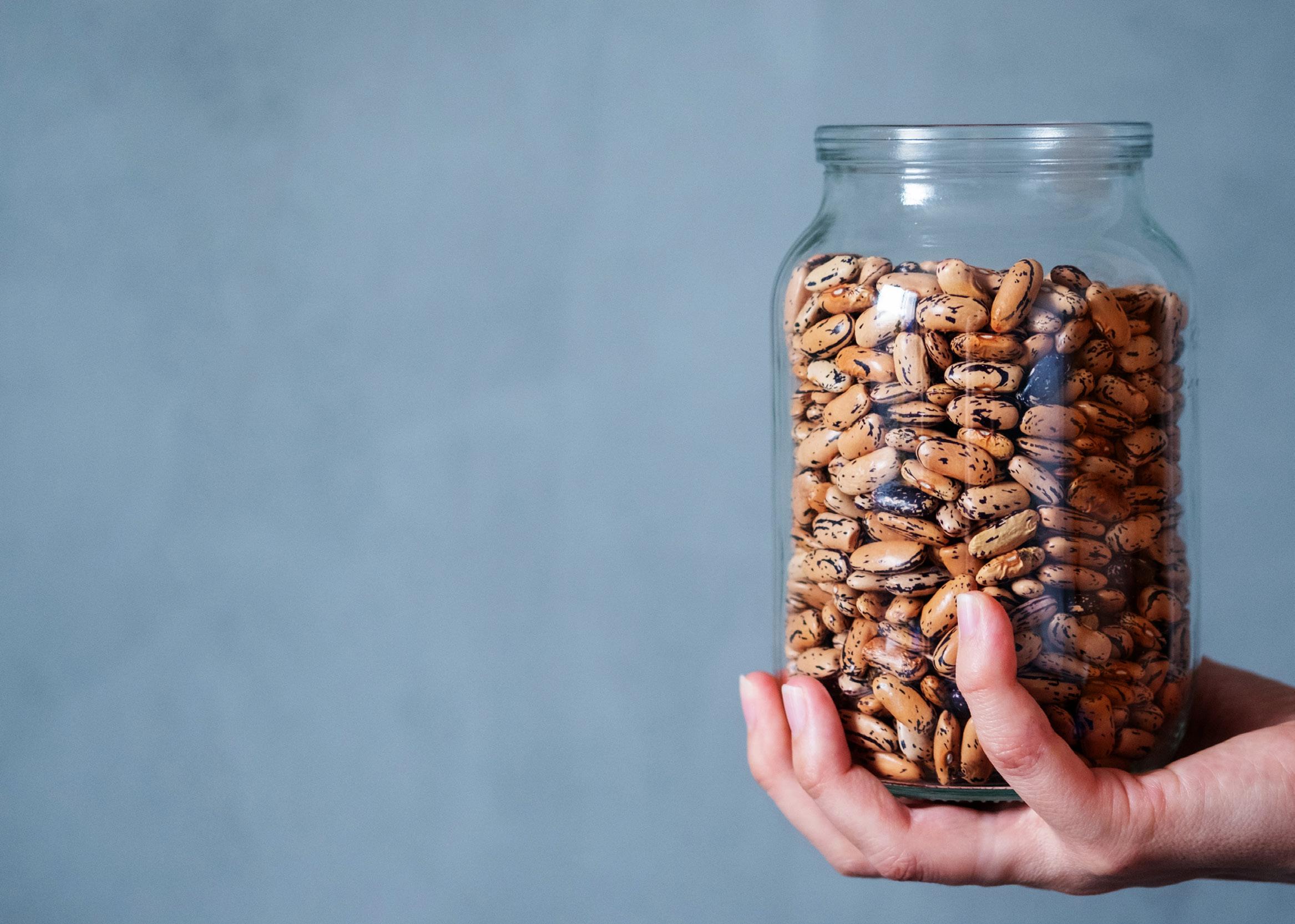
HELP LOCAL FARMS FEED THOSE IN NEED Donate to the Farmer Fund in-store or online! Your spare change makes change in our community! Give the Gift of Food Funds raised through our Change for Change program in the months of October, November, and December will be given to the Jefferson County Food Bank in the form of Gift Cards to help support families with additional food during the holiday season. Happy Holidays Visit our Website to nominate your favorite non- profit organization for 2024 Nominations open October/November Recipients announced in December www.foodcoop.coop/beans-for-bags
Let’s Talk Turkey!

It’s that time again, when the leaves fall from the trees, and pumpkins go out on the porch, when families gather to share a meal and fresh turkeys are back on the menu. This year we are expecting our fresh turkeys from Mary’s to arrive in the store November 15th, no reservations needed as we will have plenty for all. We also found another option for shoppers this year that need to save a little money without compromising quality, we will be offering frozen free-range birds from Ferndale Market.
Fresh Turkeys from Mary’s
The Pitman Family has been raising turkeys since 1954, three generations. They have six turkey ranches and opened a processing plant in August 2003. Mary’s Free-Range Turkeys grow naturally with plenty of open space on a ranch. Because of cleaner living quarters, Mary’s produces a healthier and happier turkey that also has a better taste.
Mary’s Certified Organic are an additional step up the ladder in humane farming practices. These Turkeys have freedom to move about and receive a premium diet void of any chemical simulator. Certified organic feeds must be certified by the USDA, and everything that goes into them must be certified as well.
Mary’s Organic Turkey feed contains:

Mary’s Free-Range turkeys are raised on healthful grains and allowed to roam in areas four times the size of areas provided by the average commercial turkey ranch. Their highprotein diet provides the optimal amount of nutrients for the turkey to grow into bigger and more flavorful turkeys than those typically found at the supermarket.
GAP Rated Step 3
MORE AT
https://www.marysturkeys.com/turkeydifference.html
NO Antibiotics Ever Non-GMO Corn and Soybean Meal NO Animal By-Products NO Pesticide Treated Grains NO Grains Grown with Chemical Fertilizers
LEARN
22
NEW Frozen Free Range
Turkeys at a Great Price.
We searched high and low to find a turkey that we could offer at a lower price this year, we understand that inflation is hitting hard but don’t want you to have to compromise your standards. Ferndale Farms has been raising free-range, antibiotic free turkeys for three generations, since 1939 so they know a thing or two about these birds. By raising birds out on grass and without the use of antibiotics, the Peterson family is excited to inspire a different pathway –for farming and our food.

Free-Range Turkey

Antibiotic-Free
Custom Feed

Humane Processing
Naturally Processed
23
Slow and Easy
When convenience counts, turn to your slow cooker for flavorful meals that are low effort, high reward and worth the wait.

Reprinted by permission from grocery.coop. Find recipes, plus information about your food and where it comes from at grocery.coop.
Slow Cooker Orange Chipotle Beef Tacos
Serves 6. Prep time: 4 to 8 hours; 20 minutes active.
11⁄2 pounds beef chuck roast
2 tablespoons tomato paste
1 teaspoon chipotle powder
1 teaspoon ground cumin
1⁄2 teaspoon dried oregano
1⁄2 teaspoon salt
4 cloves garlic, peeled
2 large seedless oranges, quartered
12 taco shells or corn tortillas
3 cups shredded lettuce
3 medium tomatoes, chopped
11⁄2 cups shredded Monterey Jack cheese
Slow Cooker Chicken Cacciatore

Serves 6. Prep time: 8 hours; 1 hour active.
1. Place the beef in a slow cooker. Stir together the tomato paste, chipotle, cumin, oregano and salt in a small bowl, then rub the mixture over the beef. Place garlic cloves and oranges on top of the meat and cover the pot. Turn temperature to high and cook for 4 hours, or on low for 7 to 8 hours. When the meat shreds when pressed with a fork, turn off the cooker and take out the insert to cool. Use tongs to transfer the meat to a bowl to cool, and shred the beef.
2. Place a strainer over a small pot and strain the liquids from the cooker into the pot. Squeeze the oranges over the strainer. Bring the juices to a boil and cook for about 10 minutes, until reduced to a syrupy consistency. Pour over the shredded beef and toss to coat. Taste for seasoning; add salt or more chipotle, if desired.
3. Serve with taco shells or warm corn tortillas, lettuce, chopped tomato and shredded cheese. Pair these tacos with tortilla chips and homemade guacamole or your favorite salsa. The meat can also be folded into larger tortillas with leftover cooked rice to make tasty burritos.
A slow cooker transforms affordable cuts of meat like chuck roast, pork shoulder and chicken legs into tender, juicy main dishes.
14 ounces diced canned tomatoes
1 large onion, chopped
1 medium green pepper, chopped
1 medium zucchini, sliced
2 ribs celery, chopped
3 cloves garlic, chopped
1 teaspoon dried basil
1 teaspoon dried oregano
1⁄2 teaspoon salt
1⁄2 cup dry red wine
1⁄2 cup chicken stock
4 ounces tomato paste
6 chicken legs, skinless
2 cups brown rice
1. In a large slow cooker, combine the tomatoes, onion, green pepper, zucchini, celery, garlic, basil, oregano, salt, red wine, chicken stock and tomato paste. Stir to mix, then add the chicken legs and press down to cover them with the vegetable and spice mixture as much as possible. Set the cooker on low and cook for 7 hours.
2. Start cooking the rice about 45 minutes before the chicken is finished cooking.
3. When chicken cooking is completed, taste and add salt and pepper as needed. Serve a cup of cooked brown rice in a wide bowl or pasta plate, with a chicken leg and vegetable sauce.
25
Crockpot Calico Beans
Serves 10. Prep time: 5 hours, 15 minutes; 15 minutes active.
1 tablespoon olive oil
1 yellow onion, diced
1 red bell pepper, diced
2 garlic cloves, minced
1 15-ounce can pinto beans
1 15-ounce can butter or cannellini beans
1 15-ounce can kidney beans

1 15-ounce can crushed tomatoes
1⁄3 cup ketchup
3 tablespoons maple syrup
2 tablespoons tamari
1 tablespoon apple cider vinegar
2 teaspoons Worcestershire sauce
Salt and pepper to taste
1. Rinse and drain the canned beans. Heat olive oil in a skillet over medium-high heat and saute the onion, pepper and garlic for 5-10 minutes until tender.
2. Add the onions and peppers to a slow cooker along with the rest of the ingredients and stir well. Turn the slow cooker to low and cook for 5 hours. Taste for salt and pepper. Serve warm.
Slow Cooker Teriyaki Beef Ribs

Serves 6. Prep time: 7 hours, 30 minutes; 30 minutes active.
4 pounds beef short ribs (about 4 inches long)
3⁄4 cup teriyaki sauce
1 tablespoon Sriracha sauce
2 tablespoons sesame seeds
2 medium scallions, finely chopped Canola oil
1. In a large skillet, heat a tablespoon or so of canola oil over medium-high heat, and swirl to coat the surface with oil. When the pan is hot, place several ribs, meaty side down, in the hot oil. Cook for 1 to 2 minutes to sear and brown the surface. Transfer the ribs to a 4-quart slow cooker, and continue until all the ribs are browned, adding more oil as needed.
2. In a cup, mix the teriyaki sauce and Sriracha sauce and pour over the ribs, turning to coat. Cover the slow cooker and set to low. Cook for 7 hours.
3. Uncover the ribs and transfer them to a platter; cover to keep warm. Pour the liquids from the cooker into a small pan and bring to a boil over high heat. Reduce to a strong simmer and cook for about 10 minutes, to reduce and thicken the sauce. If desired, skim the fat from the sauce.
4. Pour the sauce over the ribs and sprinkle with sesame seeds and scallions. Serve warm.
26
Citrus-Chile Pork with Herb Sauce

Serves 6. Prep time: 6 hours, 30 minutes; 30 minutes active.
6 cloves garlic, sliced
2 large jalapeños, seeded
2 tablespoons extra virgin olive oil, divided
1 tablespoon ground cumin
1 tablespoon dried oregano
1 teaspoon salt
3 1⁄2 pounds pork butt or shoulder, bone-in
1 large orange, quartered
1 large lime, quartered
2 large scallions, chopped
1⁄2 cup fresh cilantro
3 cups cooked brown rice
1. In a food processor or food chopper, mince the garlic and jalapeños; remove half to use later for the sauce. Add 1 tablespoon of the olive oil, cumin, oregano and salt and process to mix.
2. Trim extra fat layer from the roast. Place the roast in a 4- to 6-quart slow cooker. Rub the olive oil mixture all over the roast — make sure the whole roast is covered. Place the orange and lime quarters on top of and around the roast, then cover tightly. Cook on low heat for 6 hours.
3. When the pork is tender, transfer to a cutting board, reserving the juices and the citrus quarters for the sauce. Let stand for 5 minutes before cutting; keep warm while you
27
Cooking with Beer
Cheers! Your favorite brew is a surprisingly useful recipe ingredient.



From the darkest stouts to the lightest of summer ales, craft beers created at upstart breweries are undeniably popular. Beer lovers have grown increasingly curious about how to pair – and prepare – food with beer. Marinate and tenderize meat or caramelize vegetables using beer. Its carbonation makes the batter on fried foods light and crispy, and it helps to leaven baked goods, giving them a moist, tender texture. The alcohol acts as a solvent to break chemical bonds in other ingredients, intensifying the flavors we perceive from both the aroma and taste of food. Discover how deeply flavorful cooking with beer can be!
use local beer


28
PRO TIP!
Turkey Vatapa
Servings: 4 to 6. Prep time: 45 minutes; 30 minutes active.
1 tablespoon vegetable oil
1 cup diced yellow onion
1⁄2 cup diced green bell pepper
3 cloves garlic, minced
1 tablespoon minced fresh ginger
2 tablespoons minced fresh jalapeño pepper
3 1⁄2 cups diced tomatoes (1 28-ounce can)
12 ounces lager beer
Salt
3⁄4 cup peanuts, ground fine in a food processor
1 cup light coconut milk
2 1⁄2 cups cooked turkey, skin removed, chopped
Ground black pepper
3 tablespoons minced parsley
3 tablespoons minced cilantro
1 lime, zest and juice
1. In a large Dutch oven or stockpot, heat oil over medium-high heat. Add onion and bell pepper and saute for 5 minutes. Add the garlic, ginger and jalapeño and saute another few minutes.
2. Stir in the diced tomatoes, beer and a pinch of salt and bring to a boil. Cover pot, reduce heat to a simmer and cook for 15 minutes, stirring occasionally. Add the ground peanuts, coconut milk and turkey. Stir and simmer, uncovered, for another 5 to 10 minutes. Add salt and pepper to taste and stir in the parsley, cilantro and lime zest and juice.
Start simply: Try using beer in place of water or stock, as in this stew. Beers offer a wide variety of flavors, colors and intensity, and a stronger brew will produce a more flavorful dish. With heat, much of the alcohol evaporates, leaving behind the beer’s complex flavors.
Whole Wheat Beer Bread

Servings: 14 (1 loaf). Prep time: 1 hour, 15 minutes; 15 minutes active.
3⁄4 cup water
1⁄4 cup bulgur
1 cup unbleached flour
2 cups whole wheat flour
4 teaspoons baking powder
1 1⁄2 teaspoons salt
1⁄4 cup molasses
1⁄4 cup oil
12 ounces wheat beer or lager
1. Preheat oven to 350° F. Lightly grease a 9x5-inch loaf pan. In a small saucepan, bring the water to a boil, then add the bulgur and cover. Reduce the heat to low and cook for 15 minutes. Take off the heat, uncover, let cool.
2. In a large mixing bowl, combine unbleached flour, whole wheat flour, cooked bulgur, baking powder, and salt. In a medium bowl, mix the molasses and oil, and stir in the beer to mix. Pour into the flour mixture and stir until wellmixed. Scrape dough into prepared loaf pan.
3. Bake for 40 to 45 minutes, until a toothpick inserted into center of the loaf comes out clean.
Reprinted by permission from grocery.coop. Find recipes, plus information about your food and where it comes from at grocery.coop.
29
Chocolate Stout Sheet Cake
Servings: 12. Prep time: 1 hour; 15 minutes active.
1 stick butter, softened
1 1⁄2 cups light brown sugar
2 large eggs
2 cups flour
3⁄4 cup cocoa
1 1⁄2 teaspoons baking soda
1⁄2 teaspoon salt
3⁄4 cup plain yogurt
1 cup stout beer
Whipped cream
1. Preheat the oven to 350° F. Grease and flour a 9x13-inch baking pan and reserve.
2. In a stand mixer or a large bowl with an electric mixer, cream the butter, then add the brown sugar and beat until fluffy. Scrape the sides of the bowl and beat again to incorporate all the butter thoroughly. Add in the eggs and beat for 1 minute.
3. In a medium bowl, whisk the flour, cocoa, baking soda and salt. Measure the yogurt and stout and reserve.
4. Beat the flour mixture into the butter mixture, then scrape down, beat briefly, then add the yogurt and beat to mix. Add the stout last, beating to incorporate, scraping down and mixing one last time for a smooth batter.
5. Scrape the batter into the prepared pan and smooth the top. Bake for 35 to 40 minutes, until a toothpick inserted in the center of the cake comes out with only moist crumbs attached.
6. Let the cake cool completely on a rack. Serve squares of cake with lightly sweetened whipped cream.
Dark beers like porter or stout are rich with the flavors of chocolate, coffee and caramel, making them an ideal ingredient to enhance baked goods. The beer’s bitter notes are balanced by the sweetness of this chocolate cake.

30
NCG_Cobranding_Newsletter_Turnkey_Spread_2022-Q3_Cooking_with_Beer_FOR PDFS.indd 3-4
Oven-Roasted Pulled Pork
Servings: 12. Prep time: 4 1/2 hours; 30 minutes active.
4 pounds boneless pork shoulder
2 tablespoons brown sugar
1 teaspoon salt
1 tablespoon smoked paprika
2 teaspoons ground cumin
2 tablespoons vegetable oil
12 ounces lager beer or apple juice
Sauce
1 1⁄2 cups ketchup
1⁄4 cup apple cider vinegar
1⁄2 cup Dijon mustard
1⁄4 cup brown sugar
2 tablespoons Worcestershire sauce
12 buns
Bread and butter pickles, sliced sweet onions and pickled peppers (optional)
1. Preheat the oven to 300° F and adjust the racks so you can fit a Dutch oven with the lid on. If desired, trim some of the fat from the outside of the roast (the liquids will be used for the sauce, so all the rendered fat will be in the dish). The pork should fit in a large Dutch oven; if necessary, cut to fit.
2. In a small bowl, mix the brown sugar, salt, smoked paprika and cumin. Rub all over the pork.
3. Place the Dutch oven over medium-high heat and let heat for several seconds before drizzling in the oil. Let the oil heat for a few seconds and
then place the pork in the pan. Let it brown for about two minutes before turning carefully to brown all sides. When the pork is browned, pour in the lager or apple juice. Stand back to avoid the steam and fat spatters that the liquid will create when added to the Dutch oven.
4. Cover the Dutch oven, place in the preheated oven and set a timer for 3 hours. After 3 hours, uncover the pan and use tongs to turn the pork over. Return to the oven for 1 hour, until the meat is easily pierced with a knife and some browned edges are visible.
5. Remove from the oven and transfer the cooked pork to a large bowl to cool, leaving the liquids in the Dutch oven.
6. In a medium bowl, combine the ketchup, cider vinegar, Dijon mustard, brown sugar and Worcestershire sauce, then stir them into the liquid in the Dutch oven. Turn the burner to medium-high heat and bring to a boil, stirring, then reduce the heat to keep the liquids simmering. Cook, stirring frequently for 10 to 15 minutes to thicken the sauce. Remove from heat.
7. When the pork is cool enough to handle, use two forks to shred the meat.
8. Stir the cooked meat into the sauce to mix and heat through.
9. Serve the pulled pork on buns with fixings, such as bread and butter pickles, sliced sweet onions and pickled sweet or hot peppers, if desired.
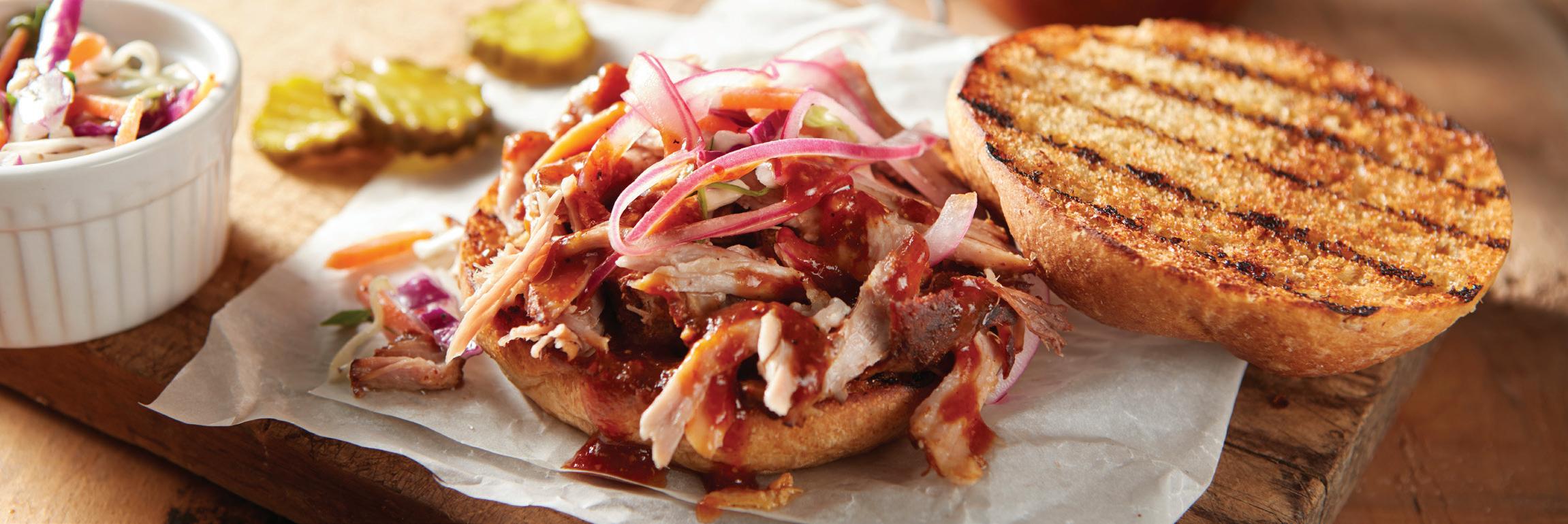
31
5/19/22 2:12 PM
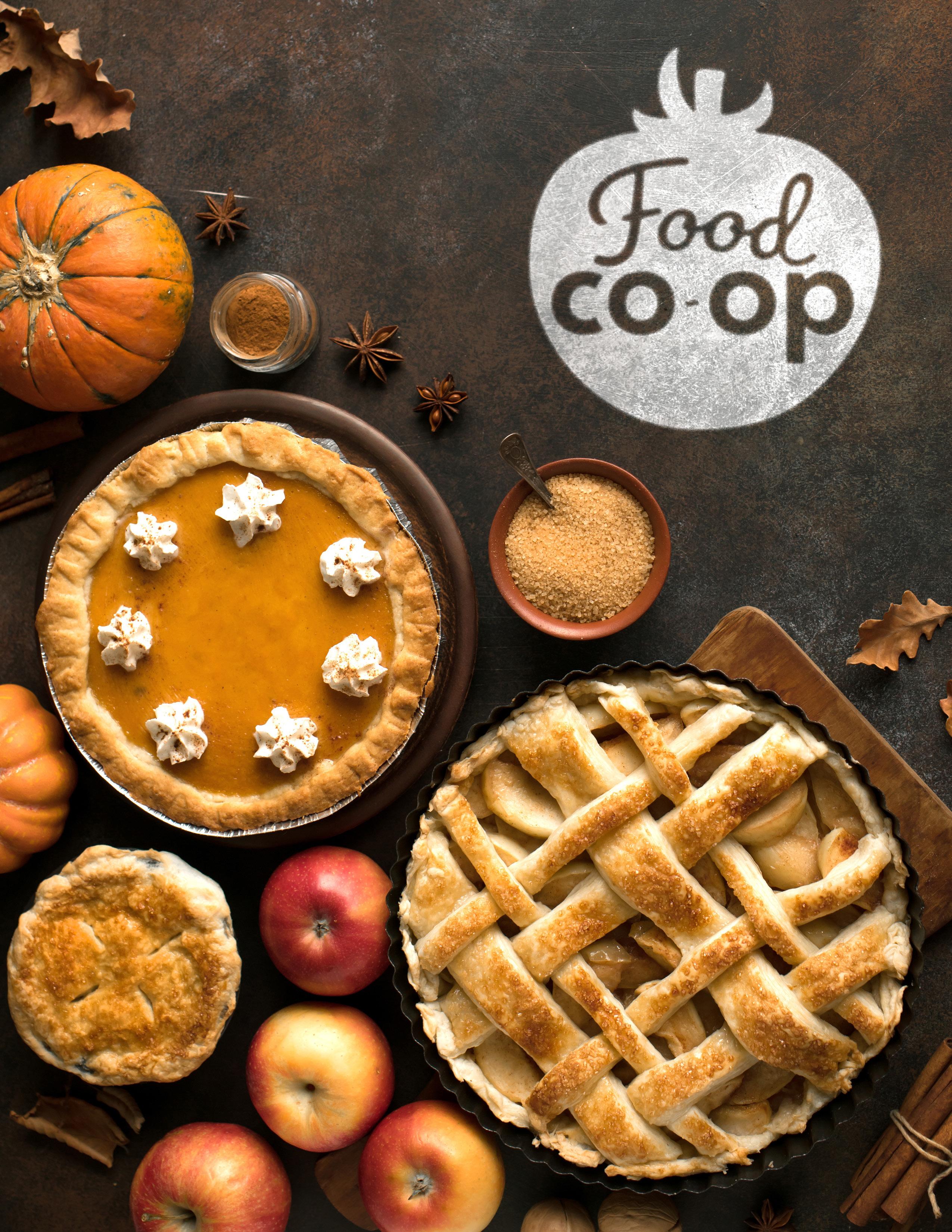
414 Kearney St. Port Townsend, WA • WWW.FOODCOOP.COOP • Open Daily 8am - 9pm


































 BY CAMERON JONES, BOARD MEMBER
BY CAMERON JONES, BOARD MEMBER































































